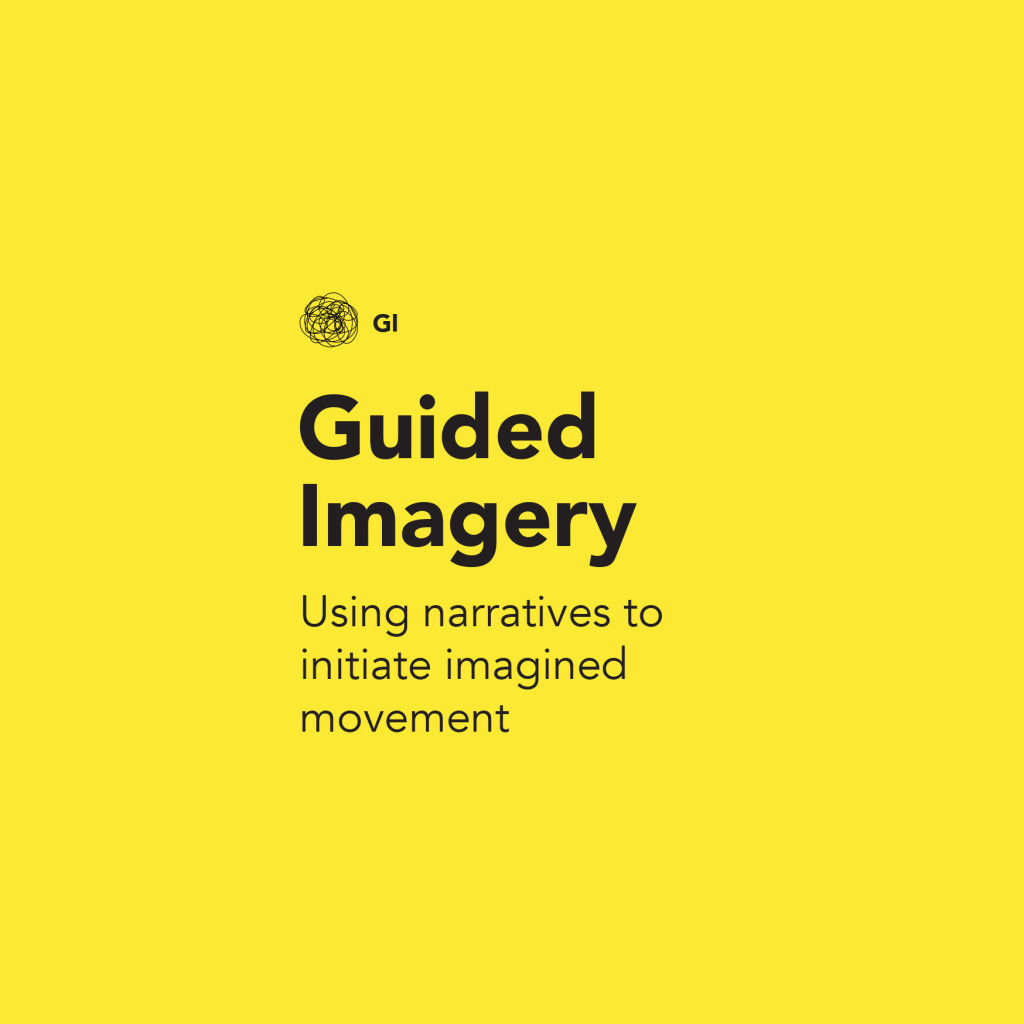
How
Ask participants to close their eyes. Read the narrative. Invite participants to respond in any way (physical, auditory, etc.) they feel inspired to during the reading. After you have finished the script, ask participants to respond.
Narrative
You find yourself in a kitchen.
It might be yours
or somebody else’s.
Make note of where you are.
Survey your surroundings.
Go to the refrigerator. Grab the door handle. What does it feel like? How does it feel in your hand. Listen to the hum of your refrigerator. Open the refrigerator door. You are hit by a quick wall of cool air.
Reach inside and find one object to pull out. What is that object? Does it require two hands to carry or do you hold it in one? How does it feel in your hand? Is the object cold? Does it have a texture? Make note of these details.
Take the object and put it on the counter. What do you normally do with this object? Do you slice it? Do you pour it? Do you eat it? Do you drink it? Do one action you would normally do with this thing. How do you feel when you do this?
Discussion Prompts
1. Does anyone want to share their experience?
2. Did anything stand out?
3. How did you feel?
4. How do you feel now?
5. Can you explain or show any actions you did?
6. Where were you?
7. What object did you choose?
Why
The mobilities turn in the social sciences has expanded the way we think about bodies in motion (Sheller and Urry, 2006). John Urry (2007) has argued that imaginary travel through objects such as the television invites new understandings of time and place, producing a body that exists in multiple places at one time. Furthermore, research on experiences of virtual movement and being (Urry, 2007; Kozel, 2007; Manning, 2007) expand the notion of ‘what a body can do’ (Manning, 2007).
These new perspectives on the body in motion require a reconsideration of the methods of inquiry, ones that fully consider the many ways people can move.
Guided Imagery directly applies the argument that movement can exist in many forms, some invisible to the eye or technical seeing tools, such as video cameras or sensors. The activity seeks to understand the elements and sequences of imaginative choreography. It also looks to explore how physical movement knowledge, through the process of aging, might be redistributed or transferred when individuals find themselves physically unable to perform specific movements. In doing so, the method seeks not only to apply theoretical considerations of imaginary movement to empirical research, but also questions the distinction between physical and imaginary movement.
References
References Kozel, S., (2007), Closer : Performance, Technologies, Phenomenology, Cambridge, Massachusetts: The MIT Press.
Manning, E., (2007), Politics of Touch: Sense, Movement, Sovereignty, Minneapolis: University of Minnesota Press.
Sheller, M., and Urry, J., (2006), ‘The new mobilities paradigm’, Environment and Planning, 38, 207-226.
Urry, J., (2007), Mobilities, Cambridge: Polity Press.